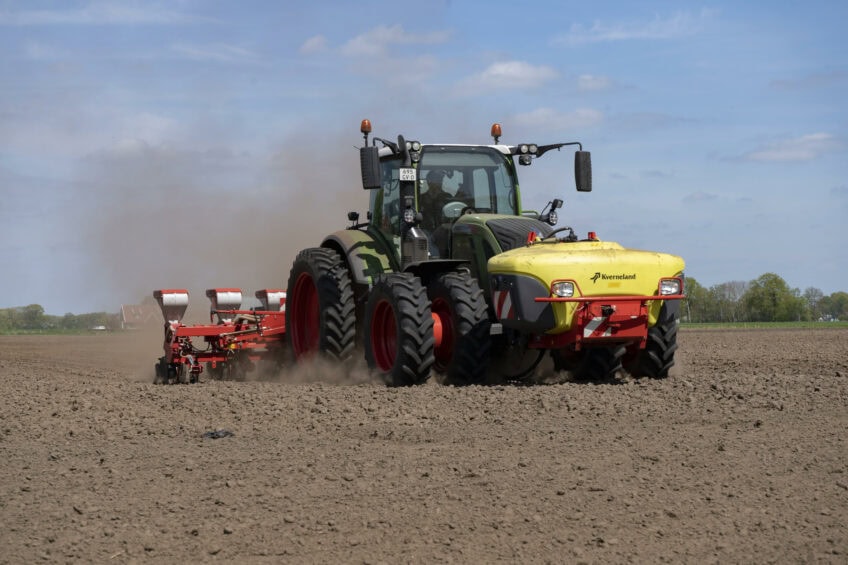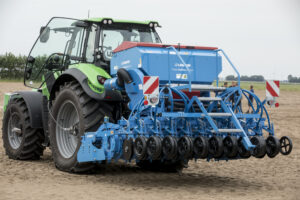How precision planters have become faster, more exact and more versatile

Air pressure had led to seed drills and planters that can accurately seed at the desired depth and distance at high speeds. At the same time, seed drills for cereals can apply multiple different seeds in one go.
These are just two examples that illustrate how seed drills and precision planters have evolved over time to become faster, more exact and more versatile. Seed drills on one hand, apply a certain amount or rather weight of seeds per acre or per hectare. At depths within centimetre accuracy. Precision planters operate at the other end of the spectrum by precisely planting a desired number of seeds per acre or per hectare at a predefined inrow distance without misses and doubles. At depths within millimetre accuracy. While the technology hasn’t drastically changed over the past decades, some clear trends are eminent.
Text continues underneath image

Discs and wheels on drills
If we zoom in on the situation in The Netherlands, we see that a working width of 3 m is still very common. Mostly with the drill mounted on a power harrow. Organic growers show a tendency towards 4.5 m working widths so it fits in with the distance between their controlled traffic farming tramlines. If capacity is required, 6 m machines are also used.
The drills are usually mounted, not pulled and are increasingly using systems to set and maintain the seeding depth more accurately and to reconsolidate the soil. New drills are mostly fitted with discs / disc coulters instead of common coulters because discs are able to maintain the desired working depth more secure. Other reasons why farmers prefer discs, is that these can cope better with crop residues and that they don’t clog up that easily. Increased (and sometimes forced) adoption of cover crops also adds to this. The new Väderstad Proceed is a development that clearly fits the trend towards more precise seeding of various (combinable) crops.
Both organic and conventional farmers are interested in seeding multiple types of crops in one go. This results in an increasing interest in drills that can handle multiple types and shapes of seeds. Various manufacturers can nowadays meet this demand with machines with two or more separate seed tanks and dosing systems.

Air pressure propels increasing speeds
While maize, onions, vegetables and various other irregularly shaped and larger seeds have always been planted with pneumatic drills, air pressure now also gets a grip on seeds like sugar beet. The air is used to force the seeds down into the furrow at the inrow distance set by the operator. While this is far from new, the Danish manufacturer Kongskilde started marketing it 50 years ago, it’s experiencing a revival because of the relatively high driving speeds it enables. Up to 15 km/h. 6 m machines that plant 8 rows of maize and 12 rows of sugar beet are currently most popular.
At last year’s EIMA exhibition in Bologna (Italy), French and John Deere owned manufacturer Monosem launched its Active Seed Guidance technology. After leaving the metering unit, the seed no longer falls down through a seed delivery tube, but a kind of “brush belt” transports it to just above the ground. This way, gravity no longer affects the planting distance. The Maschio Gaspardo Chrono on the other hand, uses a vacuum metering and a pressurised seed delivery system for that.
A technology that most new precision planters share however, is electric drive of the metering units. While some manufacturers have moved towards this completely, some offer it optionally.
Translation: René Koerhuis
 Beheer
Beheer



 WP Admin
WP Admin  Bewerk bericht
Bewerk bericht